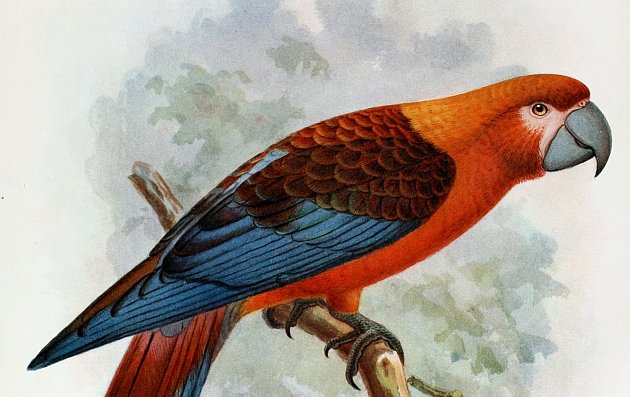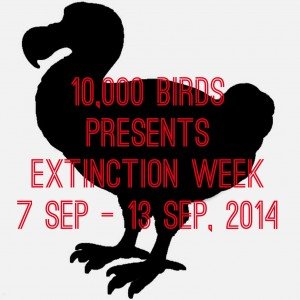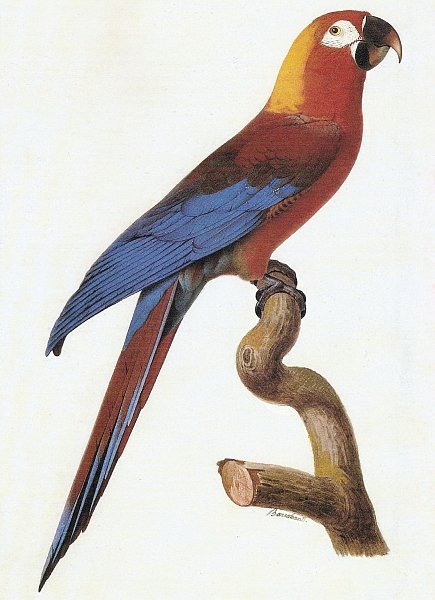
Islands, with their high levels of endemism and specialization, are particularly fragile and vulnerable to human activity. The species that manage to colonize these islands evolve in competition with relatively few other species, developing survival strategies based on interdependence, co-evolution, and mutualism rather than adapting to deal with a broad range of predators and competitors. Unfortunately, these features that make island ecosystems so unique have also lead to a disproportionate number of extinct island birds relative to continental ecosystems. Recent studies show that many island species went extinct before anyone managed to document their existence. The islands of the Caribbean are no exception. There were potentially up to ten or more species of macaw in the West Indies, scattered on most of the major islands from Cuba in the west to Martinique in the east. However, with the arrival of the Europeans (and most likely even before their arrival), nearly all the endemic macaws of the Caribbean slipped into extinction with little material left to verify they even existed except for the Cuban Macaw (Ara tricolor).
Painting by Jacques Barraband, ca. 1800
Formerly described in 1811 by Johann Matthäus Bechstein, the Cuban Macaw was a primarily red, long-tailed parrot with beautiful orange feathering around the nape and blue feathering on the wings and tail. It was only about 20 inches (50cm) long, making it about a third smaller than its supposed closest mainland relative, the Scarlet Macaw. Although knowledge of its existence dates back to writings made by Christopher Columbus in the 14th century, we know relatively little about this bird’s biology, ecology, and historical distribution. Most of what we do know about the Cuban Macaw comes from the writings of Juan Gundlach. According to his writings, the Cuban Macaw’s behavior was typical of the genus, living in pairs or family parties that kept in contact with loud, raucous calls. It preferred open savanna terrain with scattered trees and gallery forest where its favored food grew — the seeds and fruits of the royal palm and chinaberry tree. Nests were in hollows in palm trees.
This bird was in serious trouble by the mid-19th century due to the adults being killed for food and young being taken for pets. Its last stronghold was the Zapata Swamp in western Cuba. In fact, Juan Gundlach collected a number of birds from the a flock that regularly came to feed in a group of trees at the town of Zarabanda just outside the modern day boundaries of Cienaga de Zapata National Park. Several European zoos had this species in their collections at the time, but they either made no effort to breed it or it did not breed well in captivity. Although the last specimen was collected in 1864, sightings persisted until about 1885 which is the official extinction date — the last of the endemic macaws of the Caribbean.
Sadly, the only way to see what this bird may have been like in life is to visit one of 15 collections worldwide that currently hold one of the 19 existing specimens such as the Natural History Museum in Paris or the Smithsonian Museum in Washington DC.
…
Extinction is forever. A species, wiped off the earth, never to exist again. What a horror! What a disaster! What a wrong!
 It is correct, of course, to think of extinction this way during the Holocene Extinction, which we are living through right now. After all, the extinctions have occurred, are occurring, and will occur because of us, people. We have so altered the earth – pumping pollution, moving species around, destroying ecosystems – that many species, dependent upon ecological niches or simply unprepared for an onslaught of unfamiliar organisms with which they did not evolve, have no chance. It is depressing and angering and just wrong.
It is correct, of course, to think of extinction this way during the Holocene Extinction, which we are living through right now. After all, the extinctions have occurred, are occurring, and will occur because of us, people. We have so altered the earth – pumping pollution, moving species around, destroying ecosystems – that many species, dependent upon ecological niches or simply unprepared for an onslaught of unfamiliar organisms with which they did not evolve, have no chance. It is depressing and angering and just wrong.
But, in the wider view of things, extinction is necessary. It is what drives evolution. Extinction is what befalls the species that fails to adapt, to survive, to thrive. Most species go extinct. That is just the hard, cold reality of nature, red in tooth and claw.
This is not to say that we should sit back and let the Holocene Extinction continue. No! We must fight to save every species we can, every ecosystem, every niche.
It is the 100th anniversary of the extinction of the Passenger Pigeon, once one of the most abundant species in the world. In order to raise our awareness, to remind us of what we have lost, and to inspire us to fight for Every. Single. Species. we are hosting Extinction Week here on 10,000 Birds from 7 September to 13 September. Come back, click through, read, learn. And get angry and take action.
…














Leave a Comment